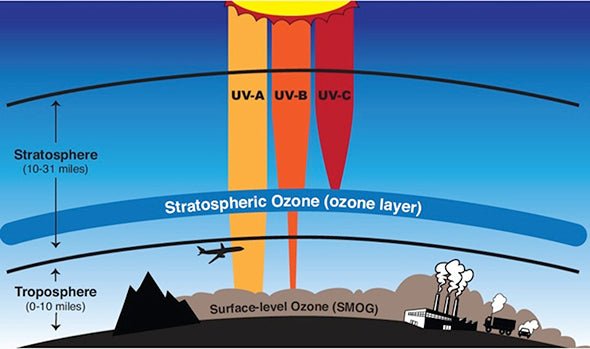UV Radiation
UV radiation, an invisible component of sunlight, is a significant topic to discuss, especially considering its varied effects on living organisms, including humans. In this blog post, we'll delve into the three distinct bands of UV radiation – UVA, UVB, and UVC –, their impact on living organisms, and the ways in which humans can safeguard themselves from the potentially harmful effects of UV radiation.
What is UV Radiation?
UV radiation is a form of electromagnetic energy emitted by the sun and artificial sources like tanning beds. It's divided into three bands based on wavelength: UVA, UVB, and UVC.
UVA (Ultraviolet A)
- Wavelength: 320-400 nanometers
- Characteristics: UVA rays have the longest wavelengths and can penetrate deep into the skin. They are less intense than UVB rays but are present with relatively equal intensity during all daylight hours and can penetrate clouds and glass.
- Effects on Living Organisms: UVA rays can cause long-term skin damage such as wrinkles and age spots. More importantly, they can contribute to skin cancer. They also play a role in tanning and can cause premature aging of the skin.
UVB (Ultraviolet B)
- Wavelength: 290-320 nanometers
- Characteristics: UVB rays have shorter wavelengths and are the primary cause of sunburn. They vary in intensity and are strongest during the midday summer.
- Effects on Living Organisms: UVB rays are responsible for causing most skin cancers. They can also cause eye damage, including cataracts, and immune system suppression. However, UVB rays are crucial for the synthesis of vitamin D in the skin, which is essential for bone health.
UVC (Ultraviolet C)
- Wavelength: 100-290 nanometers
- Characteristics: UVC rays have the shortest wavelengths and are the most harmful. Fortunately, they are completely absorbed by the Earth's atmosphere and do not reach the surface.
- Effects on Living Organisms: UVC rays are highly damaging to all forms of life at the molecular level, capable of destroying genetic material.
Protection from UV Radiation
Given the potential harm UV radiation can cause, it's crucial to adopt protective measures:
1. Sunscreen: Use a broad-spectrum sunscreen that protects against both UVA and UVB rays. An SPF (sun protection factor) of at least 30 is recommended. Reapply every two hours or after swimming or sweating.
2. Clothing: Wear protective clothing, including a wide-brimmed hat and UV-blocking sunglasses. Some clothing comes with a UV protection factor (UPF) rating.
3. Shade: Seek shade, especially during midday hours when the sun's rays are strongest.
4. Avoid Tanning Beds: Avoid artificial sources of UV radiation, including tanning beds, as they can increase the risk of skin cancer.
5. Regular Skin Checks: Regularly check your skin for any changes or new growths, and visit a dermatologist annually for a professional skin examination.
In conclusion, understanding the different types of UV radiation and their effects is crucial for taking appropriate precautions. By implementing protective measures, we can enjoy the sun safely while minimizing the risks associated with UV exposure. Remember, protection from UV radiation is a vital part of maintaining overall health and well-being.



Share:
Planetary Geology of Inner Planets and Pluto
How the Grand Tetons Formed